Pilgrims to Noah
The History of Pilgrimage to Cudi Dagh, the Mountain of the Ark
31. December 2021
You can download this paper as a chapter of the Symposium Proceeding at my Academia Account.
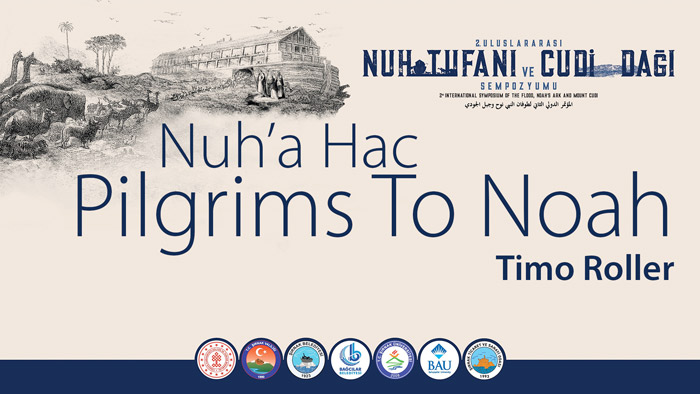
The first »Noah and Cudi Mountain Symposium« in Sirnak was probably a groundbreaking event in the history of researching the Flood and Noah’s Ark. The spotlights turned from the Agri Dagh (often called »Ararat« in Christian communities«) towards the Cudi Dagh that is most likely the real landing place of Noah’s huge ship. We could just see the mountain ridge when looking out of the windows from the Seri-Nuh-Hotel where we met in September 2013 and shared our knowledge about Noah, the Flood and the Ark on an academic level.
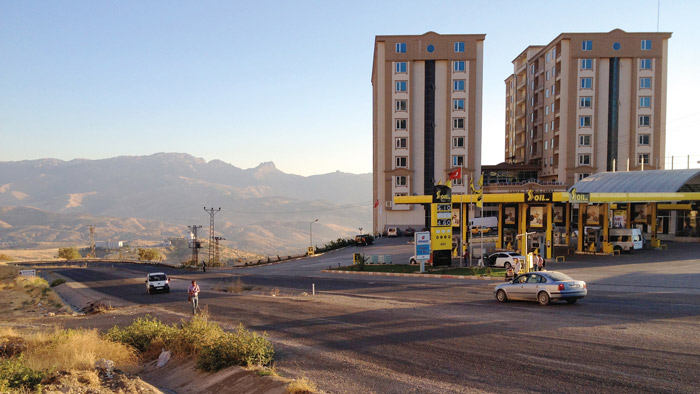
It was one of the most impressive journeys of my lifetime. My book »Das Rätsel der Arche Noah« (»The Mystery of Noah's Ark«) was published some months later in 2014. In the last few years we find Cudi Dagh in an increasing number of important publications as for example: »The Ark Before Noah« by the well-known Assyrologist Irving Finkel of the British Museum or »A Flood of Evidence« by American Creationists, who were responsible for building a life-size ark in Kentucky. So it is obvious that Cudi Dagh is no longer a forgotten sacred place.
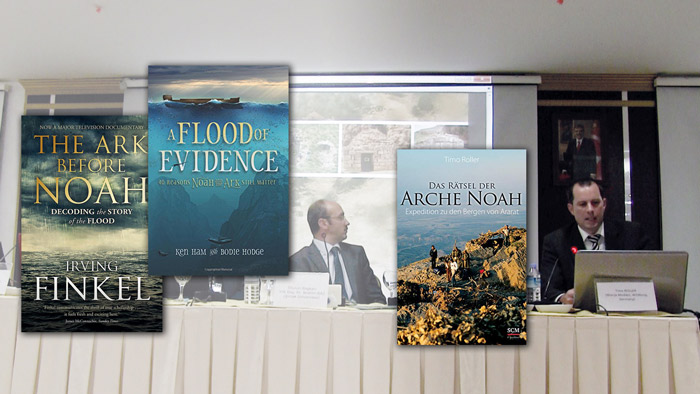
2013: Kings and Pilgrims
One of the most important lectures at the Symposium in 2013 was »Cudi Dagi’nda Kadim Bir Mesken: Sah Köyü« (»The village of Sah: a dwelling place at Mount Cudi«) by Professor Dr. Ibrahim Baz.
Prof. Baz presented new evidence and photographs of some rock carvings of Assyrian Kings engraved on the slopes of the Cudi mountains about 2700 years ago. This lecture – and others – were very valuable for my research that culminated in the publishing of my book.
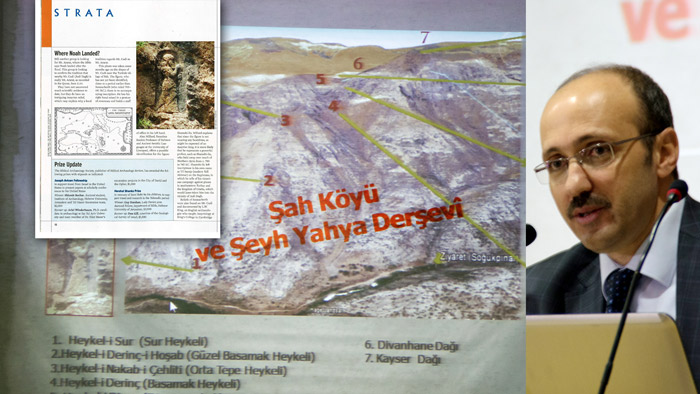
The discussion about the topic reached the world’s best selling »Biblical Archaeology Review« in November 2014. A photograph taken by Prof. Ibrahim Baz at Cudi Dagh was printed in that issue.
These carvings take us to a trip far back in time following the footprints of the pilgrims to Noah and the Ark. Yes, most apparently they are the oldest archaeological evidences of pilgrimage to Cudi Dagh, the mountain which is now wellknown for being the landing place of the Ark.
Follow me on a journey, along with the pilgrims throughout the centuries and millennia!
Present Age at the Sacred Place
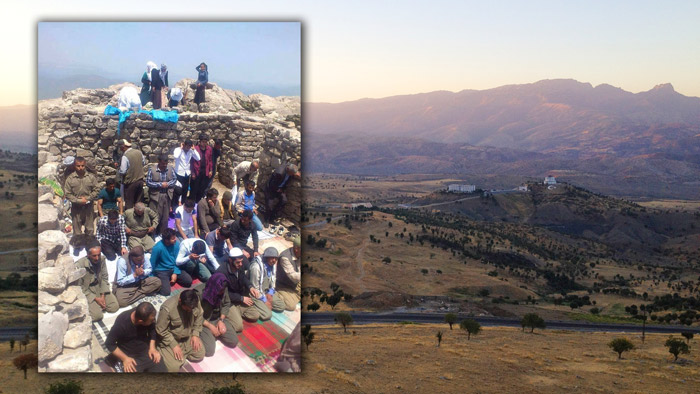
When I attended the Symposium, me and my friends Bill Crouse, Mark Wilson, Gordon Franz and John Baumgardner hoped to reach the »Sefine«, the landing place of the Ark on September 29th in 2013. But because of unpredictable circumstances on that weekend the trip to the summit of Cudi Dagh couldn’t take place.
However, some local inhabitants made it to the top in that year, put their feet exactly on the place where Noah might have dwelt some thousand years before. And they prayed! They lined up with the ancient pilgrims in search of our forefather Noah.
In 2020, the Turkish army secured the summit of Mount Cudi during a military campaign. Soldiers and politicians prayed within the sacred walls of the Sefine then.
The Fourfold Testimony of Flavius Josephus
Did the Ark really exist and did a genuine ship land on top of a real mountain? I believe so and one of the most important hints at the credibility for this story written in the Bible, the Quran, the Gilgamesh Epic and other very old sources is the fourfold testimony of Flavius Josephus. Four time he points to existing remains of the Ark so it is reasonable to assume that in the first century A.D., when Flavius Josephus wrote his »Antiquities of the Jews«, they still existed and were kept for the sceptics to see with their own eyes.
Here are his statements, three of them are recounting the times of Noah, the fourth is reflecting a much younger incident [see Roller 2014, p. 94]:
- »However, the Armenians call this place, The Place of Descent; for the ark being saved in that place, its remains are shown there by the inhabitants to this day.« [Josephus, book 1/3/5]
- Josephus quotes Berosus the Chaldean: »It is said there is still some part of this ship in Armenia, at the mountain of the Cordyaeans.« [Josephus, 1/3/6]
- Josephus quotes Nicolaus of Damascus: »… and that the remains of the timber were a great while preserved.« [Josephus, 1/3/6]
- »… the country called Carra … there are also in it the remains of that ark, wherein it is related that Noah escaped the deluge, and where they are still shown to such as are desirous to see them.« [Josephus, 20/2/2]
However, even in later times eyewitnesses where mentioned in literature and legends of rotten nails survived until the 20th century (and even until today!). The question must therefore be asked: Can we still find pieces of Noah’s Ark today?
Under the Surface of »Sefine«
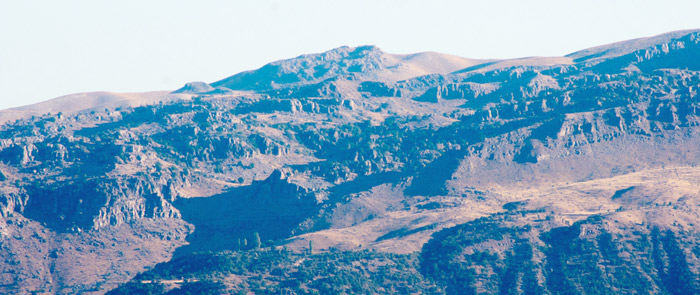
Despite the fact that no remains of the Ark can be seen upon the surface of the Sefine (at least on the many photographs I have seen yet), remains under the surface might be located by exploratory non-invasive subsurface geophysical investigations.
Yet, no progress has been made in this issue since the last symposium in 2013, but we hope the future might bring opportunities to do archaeological research on the summit of Cudi Dagh.
The Relic at Etchmiadzin
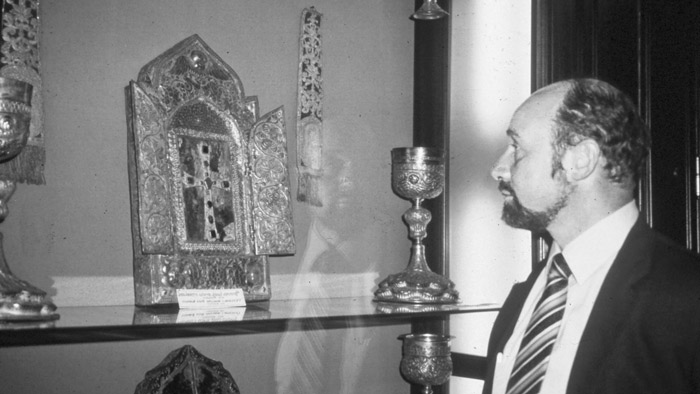
In 1989 Bill Crouse visited the monastery of Etchmiadzin [Roller 2014, p. 168] and examined a relic which is said to contain a piece of Noah’s Ark as it was collected in the 4th A.D. century by the Holy Jacob, bishop of Nusaybin. As we know from historical record, Jacob was never, as is often stated today, at Agri Dagh, but he has been at or on top of of Mount Cudi!
The relic might never has been investigated by scientific methods but the history of the item makes it plausible to state it as a possible real artefact of the Ark.
The Beam inside the Monastery Mor Augin
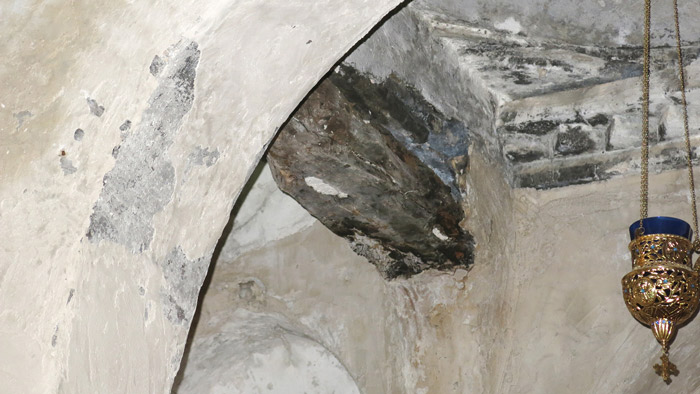
One of the first readers of my book was Detlev Simon, who is an adventurer and a friend of Southeastern Anatolia. He visited Mor Augin in 2014 and it is believed that one of the beams inside the church of the monastery was brought here from Cudi Dagh and originates from the Ark.
The founder of this Monastery, Saint Eugenios, went to Cudi Dagh with Jacob of Nisibis and so it’s possible that he also brought some wood from the meaningful ship to his place.
Some years ago, another researcher of Mt. Cudi, Charles Willis, visited this place and it is said that he brought a sample home to the United States. But as he died soon after that trip, the sample may have been lost, nobody knows were it is located.
The Find of Friedrich Bender
Friedrich Bender was a German geologist who visited the summit of Cudi Dagh in 1954 and did a small excavation with two local guides. What he found was »pea-sized, brittle decayed wooden remains. Most of these wooden pieces were cemented by an asphalt or tar-like substance.« [Roller 2013, p. 475]
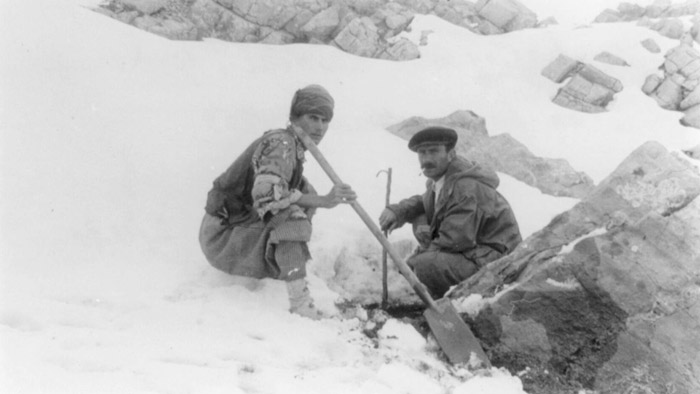
As Bender was a scientist, he examined it in a German laboratory: »After thorough dissolution of the asphalt with tetrachloride, the wooden fragments were dated according to the 14C-method, and the model age of 6635±280 years (before 1950) established. The second test, when all available material was used up, confirmed this result.«
Maybe this was indeed a piece of the Ark, but now it is lost (consumed by the tests) and no photographs seem to have been made preliminary to the examination.
A Gift from Hans Thoma
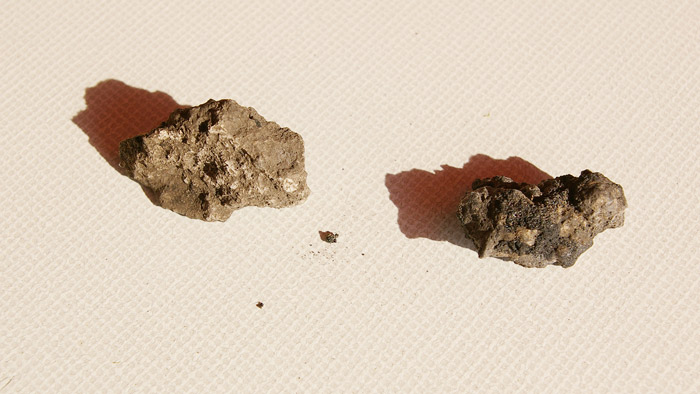
A group of explorers from Landshut near Munich went to the top of Mount Cudi in 1983. As a gift from their local guide, they received small pieces of »crumbly darkish material« [Roller 2014, p. 142] considered to be amulets. Hans Thoma gave to me one of these pieces in 2009.
A friend of mine, Michael Feld, examined it in 2016 in a laboratory with infrared spectroscopy. His analysis: »This is obviously limestone contaminated with different substances of organic origin«. So it may not be petrified wood but a piece of rock with debris on it possibly giving testimony of a catastrophe that took place on the landing place of the ark in 766 AD [Roller 2014, p. 108), when the monastery of the Ark burned down.
What we have here may well be pieces of rock intermingled with sooted particles from the place where artefacts of the ark were actually preserved!
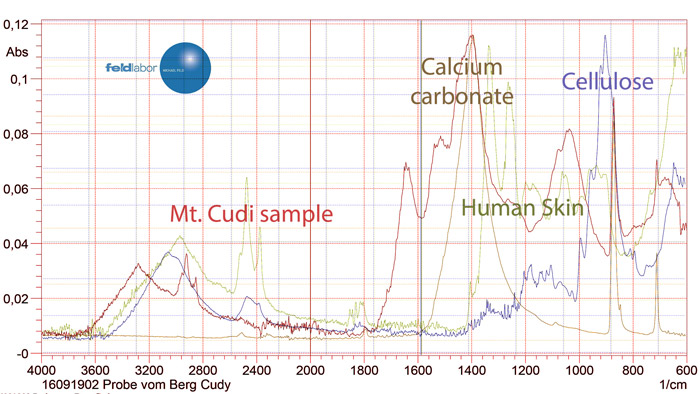
Pilgrims in the Christian and Muslim Era
Now let’s take a look at the history of pilgrims to the Ark – and to Noah hinself. Hans Thoma and Friedrich Bender were two of the »Explorers of Cudi Dagh« I presented in 2013, most of them from Germany [Roller 2013, p. 461]. Gertrude Bell and Stephen Compton also were on Mount Cudi as foreigners within the last 150 years. None of them was a »pilgrim« in the narrower sense of the word. They went there with a more scholarly viewpoint and wanted to examine the sacred place which fascinated them for one reason or another.
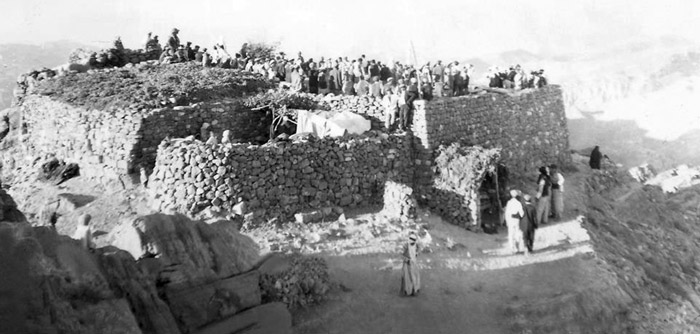
Nevertheless there were pilgrims in the past centuries on Cudi Dagh. And a lot of them! We were told that at least until the 1910s, there was a tradition for believers of different faiths coming once a year to the ruins on the top of the mountain. A photograph of a large group of pilgrims is recorded from about 1950. A festival in honor of Noah the prophet took place with people from Turkey and other countries, with believers of different religions [Roller 2014, p. 170].
When conflicts and terror increased in the area, this tradition waned, but hopefully will flourishing again in the future!
Many pilgrims are recorded over the centuries, seeing remains of the ark, remembering Noah and building churches and mosques on the summit and down in the valleys. Bill Crouse gave an overview in his paper he presented in 2013 in Sirnak, there where bishops and scholars among them.
- »Eusebius, a Bishop of Caesaraea in the third century AD, who was also the first great historian of the church, notes that a small part of the Ark still remains in the Gordian Mountains.« [Crouse 2013, p. 404]
- »Epiphanius, a Bishop of Salamis in the fourth century AD says, the remains are still shown, and that if one looks diligently he can still find the altar of Noah.« [Crouse 2013, p. 405]
- Chrysostom, a patriarch of Constantinople in the fourth century: »Do not the mountains of Armenia testify to it, where the Ark rested? And are not the remains of the Ark preserved there to this very day for our admonition?« [Crouse 2013, p. 405]
- Al-Mas’udi, the tenth century scholar and native of Baghdad, who was known for his extensive travels, writes that »The place where the ship stopped, which is on the top of this mountain, is still seen.« [Crouse 2013, p. 406]
- Ibn al-Amid, who wrote a history of the Saracens in the thirteenth century, »reported that the Byzantine emperor, Heraclius, climbed Mount Judi to see the ark in the seventh century after he conquered the Persians.« [Crouse 2013, p. 407]
Yet, these are only some of the sources telling us (as the testimonies above) that the remains of Noah’s Ark were still seen and visited.
Also we have some correlating sources for the building of a church/monastery on the top of Mt. Cudi in the 4th century and the destruction as a result of a great fire with many casualties in the 8th century.
Flavius Josephus and his Sources
In pre-Muslim and pre-Christian times the place was also considered to be an important spiritual site. Turning back to Flavius Josephus we not only know from him of remains of the Ark still existing in his times, but also that those remains had great religious significance. He writes, citing Berosus: »that some people carry off pieces of the bitumen, which they take away, and use chiefly as amulets for the averting of mischiefs.« [Josephus, 1/3/6]
So it is very likely that in the centuries between Berosus and Josephus (300 BC to 70 AD) many pilgrims removed pieces of wood from the Ark as amulets. And it comes as no surprise that after centuries of people coming and carrying away their relics, and also after the catastrophe of 766 AD which consumed what had still existed then, remains of the Ark disappeared forever!
Sennacherib and the Image of the Ark
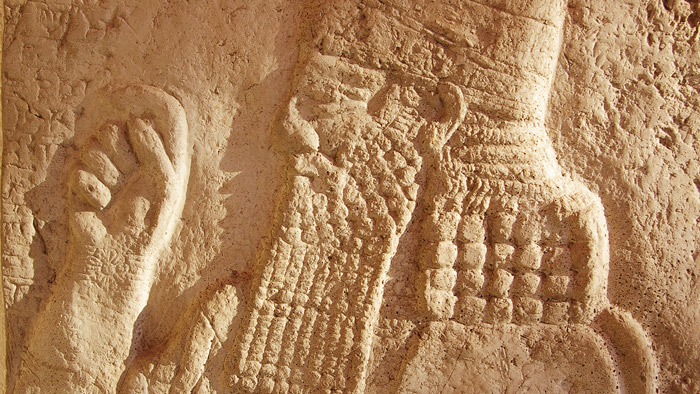
We now step back in time to the Babylonian and Assyrian peoples. As a matter of fact, records have survived from these Mesopotamian empires, which allow us to reconstruct the events, wars and religious convictions which they experienced some 2700 years ago.
King Sennacherib of Assyria ordered his stone carvers to produce multiple reliefs and inscriptions on what he had done, built and conquered. We have manifold archaeological evidence for his activities which we are able to connect to his contemporaries in Judah and other ancient kingdoms. For example we have four different accounts and sources about his conquest of the Judean city of Lachisch: the biblical account itself, prisms containing his own annals written in cuneiform script, the bas-reliefs of Nineveh that are on display in the British Museum in London. And ultimately the outcome of the excavations at Tell Lachish in modern-day Israel.
Some of his inscriptions tell us about »amulets to bring on rain and to keep desease from approaching a man, which was brought from the foot of Mt. Nipur« [Luckenbill 1924, p. 132]. This Mt. Nipur is indeed the same as Cudi Dagh, where six rock reliefs where found showing Sennacherib praying and worshipping. Jewish tradition relates that a piece of Noah’s Ark was brought to the king’s temple in Nineveh and should be identified with what the Bible calls the »god Nisroch« [Finkel 2014, p. 291]. Even Irving Finkel suggests that »an Ark-hunting event« [Finkel 2014, p. 292] might be connected to Sennacherib. Gordon Franz illuminated this topic very extensively at the 2013 Symposium!
A new examination of the bas-reliefs of Niniveh by Joshua Jeffers revealed that some of them represent the Fifth Campaign of Sennacherib »aimed at enemies to the north of the Assyrian heartland in the Zagros mountain range.« [Jeffers 2011, p. 87] Though Jeffers presumes that the Reliefs of Rooms XXXVIII and XLVIII (of the Palace without Rival in Niniveh) represents only »the territory of Ukku« [Jeffers 2011, p. 100] and »was a separate military action from his minor excursion to Mt. Nipur«, I suggest another interpretation: Slabs 11–12 of Room XLVIII appear to match very well the topographic landscape south of Mt. Nipur (Cudi Dagh!). There is a mountainous area displayed with a river and obviously an island. Could this be the river Tigris and ancient Cizre?
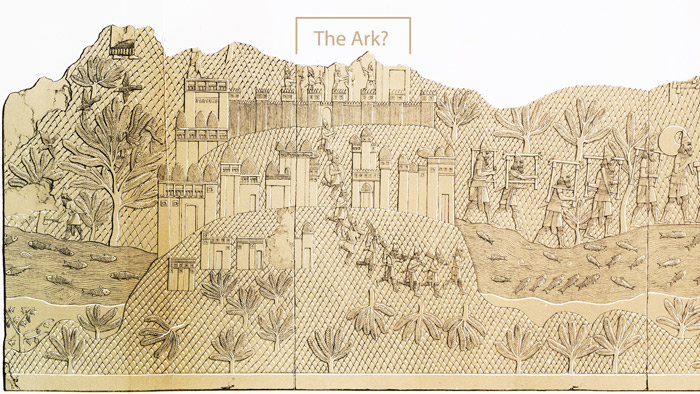
There is a rather uncommon palace or temple on top of the hills sheltered by an upper and a lower fortress, unlike other Urartaean buildings displayed on the reliefs. Could this be a very special Holy Place where a unique object was kept integrated? Is this possibly an image of the Ark itself?

The Unknown King: Who was he?
Now we finally return to the relief of the king, recorded by Prof. Baz and published in Biblical Archaeology Review [BAR 2014-11]. Here we have an unique relief which most obviously is not Sennacherib as seen in the six other sculptures. It must be an earlier king or prefect!
A renowned expert was asked by the BAR editors, who might be displayed on this relief: »Alan Millard, Emeritus Rankin Professor of Hebrew and Ancient Semitic Languages at the University of Liverpool, offers a possible identification for the figure: Shamshi-ilu. Millard explains that since the figure is not wearing any headdress, as might be expected from an Assyrian king, it is more likely that he represents a powerful prefect, such as Shamshi-ilu, who held sway over much of Northern Syria from c. 780 to 745 B.C. Shamshi-ilu left inscriptions in his own name at Til Barsip (modern Tell Akhmar) on the Euphrates, in which he tells of his victorious campaign against places in southeastern Turkey and the kingdom of Urartu, which would have taken him into the vicinity of Judi Dagh.« [BAR 2014-11]
There are other suggestions, too: Sargon II, the father of Sennacherib, or Shalmaneser III have been proposed as possible candidates by other researchers.
My own suggestion is a little bit daring: I discovered striking visual similarities within the carvings on a pedestal showing the Middle Assyrian king Tukulti-Ninurta I worshipping in front of a pedestal similar to the one it is displayed on itself. An inscription identifies this king without a doubt. I went to see it for myself in the Oriental Museum in Berlin but the object had been removed due to current construction work at the museum.
The historical accounts of Tukulti Ninurta I tell us about his journeys that led him and his troups to the area around Mt. Cudi [Wartke 1993, p. 37], so it seems likely that he was indeed the first king to carve a dedicatory relief at the bottom of the sacred mountain of Cudi Dagh.
There are substantial arguments against my idea which I'm currently discussing with some scholars.
However, the identity of the »unknown king« remains unsolved for the moment, but if it indeed would be Tukulti-Ninurta I, another conclusion could be made: The items on the pedestal could well represent a board and a nail from the Ark of Noah! However, this must remain speculation!
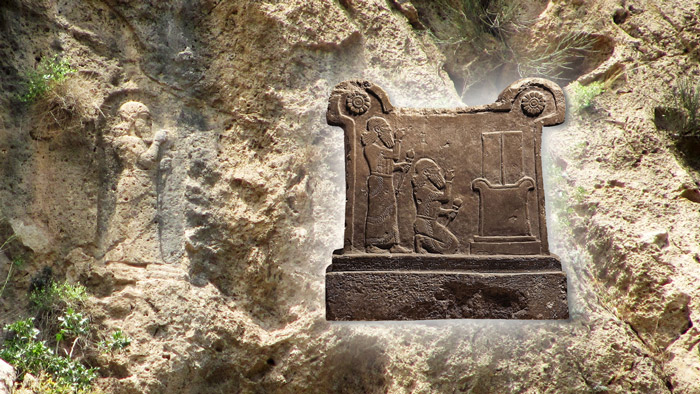
Gilgamesh and the Secret of Immortality
Finally, after we followed the Pilgrims back into times immemorial some 3000 years ago, we possess another account of an even more ancient pilgrim, but he was actually not in search for relics of the Ark, but for Noah himself: This pilgrim was Gilgamesh, the mighty king of Uruk. If we trust the story found in the Bible, Noah must still have been alive in those times, as he reached an age of 950 years, so that he could have survived many of his descendants who might well have died before those who had survived the flood.
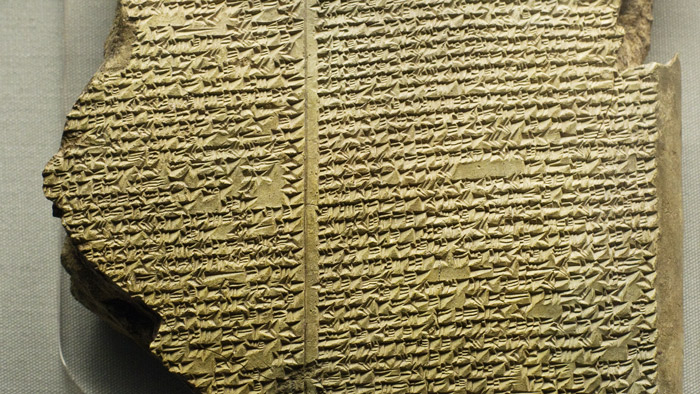
And so Gilgamesh deemed Noah – Utnapishtim in his language – as an immortal person and demanded that he might share his secret with him. The Gilgamesh Epic tells us his long adventure to the dwelling place of Utnapishtim, which might be located, according to a very ancient source, in the mountainous area of Aratta [George 2003, p. 163]. Aratta is likely the later so-called Urartu, biblical Ararat, north of the Mesopotamian lowlands where Cudi Dagh is the very first mountain ridge. Gilgamesh did not obtain immortality and also Utnapischtim-Noah died later at a very old age. Even so, Gilgamesh might well have been the very first pilgrim to encounter Noah during the history of mankind!
Enmerkar is Nimrod: Back to the Dawn of Mankind
We even know some earlier events concerning the times of Noah, recorded beyond our Holy Sources. Another Epic, »Enmerkar and the Lord of Aratta« tells us not the story of a pilgrim but obviously of a rival of the inhabitants of Aratta: Enmerkar was identified by some scholars as Nimrod [Rohl 1998, p. 210] whom we know from Genesis.
In our journey we have now reached the very days of Noah. As we have noted, we actually may possess evidence that firmly agrees with the tradition found in our sacred scriptures. This is what most current scholars would not even have deemed possible!
The Spiritual Remains of the Ark
We travelled back from prayer gatherings of local inhabitants at Mount Cudi in present times, then encountered the pilgrim festivals in the 20th century, the ruins of mosques and monasteries covering hundreds and thousands of years – and we finally met the Assyrian rulers and even the more ancient kings of Uruk including the eminent heroes of the epics of Gilgamesh and Nimrod, in search of the Ark, Noah and divine immortality.
And at the end of our journey lies yet another important clue: All nations and religions seem to have one common origin in the times of Noah. Is he and his family the ancestor of all mankind? I believe so.
So maybe we should try again to look at this mountain – Cudi Dagh – to remember and worship our God and creator. And we may live in peace with our brothers and sisters on this earth – whatever nationality or religion they might have! We are all his creation and children of God! This insight could be the spiritual treasure of the Ark – and a foundation for common research and pilgrimage to Noah and Cudi Dagh in the future.
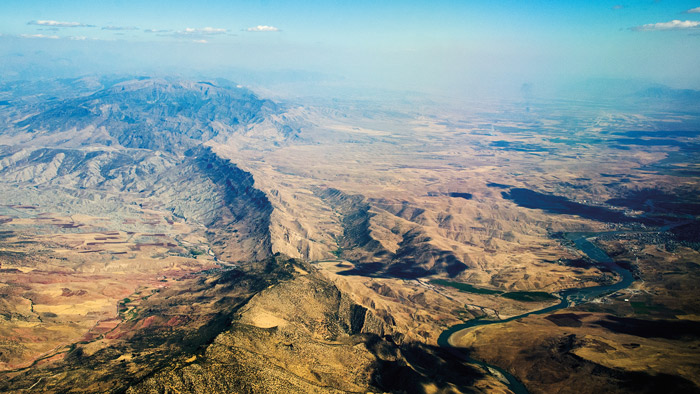

In this video you can see my lecture reading the above paper at the conference:
References
- »Biblical Archaeology Review«, November 2014
- Baz, Ibrahim: »Cudi Dagi’ nda Kadim Bir Mesken: Sah Köyü« (»The village of Sah: a dwelling place at Mount Cudi«, dt.: »Das Dorf Sakh: Eine antike Wohnstätte am Berg Cudi«), in »International Noah and Cudi Mountain Symposium Papers«, Sirnak 2013
- Crouse, Bill: »Five Reasons Noah’s Ark Did not Land on Mt.Ararat; Five Reasons Why It Did Land On Cudi Dagh«, in »International Noah and Cudi Mountain Symposium Papers«, Sirnak 2013
- Finkel, Irving: »The Ark Before Noah«
- Franz, Gordon: »Did Sennacherib, King of Assyria, Worship Wood from Noah‘s Ark as a Deity«, in »International Noah and Cudi Mountain Symposium Papers«, Sirnak 2013
- George, Andrew: »The Epic of Gilgamesh«, London, 2003
- Ham, Ken et. al.: »A Flood of Evidence«
- Jeffers, Josua: »Fifth-Campaign Reliefs in Sennacherib‘s ›Palace without Rival‹ at Niniveh«, Pennsylvania 2011
- Luckenbill, Daniel David: »The Annals of Sennacherib«, 1924
- Rohl, David: »Legend –The Genesis of Civilisation«, London 1999
- Roller, Timo: »The German Explorers of Cudi Dagh«, in »International Noah and Cudi Mountain Symposium Papers«, Sirnak 2013
- Roller, Timo: »Das Rätsel der Arche Noah« (»The Mystery of Noah Ark«), Witten 2014
- Simon, Detlev: »Eugens Balken der Arche Noah«, Wildberg 2014 (http://www.bibelabenteurer.de/html/140711_detlev_simon_1.html)
- Wartke, Ralf-Bernhard: »Urartu – Das Reich am Ararat«, Mainz 1993